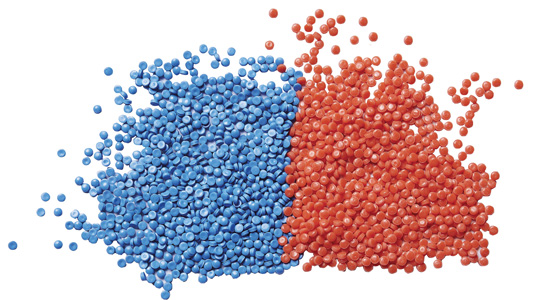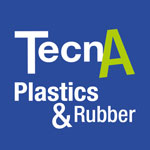 A new generation of AFT cutter-compactor for Gamma Meccanica’s regeneration lines
A new generation of AFT cutter-compactor for Gamma Meccanica’s regeneration lines
From the latest report released by CONAI, a private non-profit consortium dedicated to plastic recycling, in 2020 Italy exceeded forecasts with a 73% recycling rate for packaging placed on the market. Nevertheless, compared to other renewable materials (steel, aluminum, paper, wood and glass), plastic remains the most difficult material to recover. Last year, with 48.7% of recycled plastic, the target of 50% set by the EU for 2025 was almost reached, but this goal also includes the revaluation of the plastic in the form of fuel. For those who work in plastics, waste-to-energy is not a solution, because an economic resource would go to “ashes”. Recycling is, however, growing more significantly than waste-to-energy and due in part to the separate collection of post-consumer waste, but also to the continuous technological evolution of recycling equipment that allows a wider range of plastic waste to be recycled.
Gamma Meccanica SpA, an Italian company specialized in the design and production of lines for the recycling of plastic materials has once again responded to clients’ requests and created a new generation of cutter-compactors. The goal was to improve the performance of these machines and their application on materials that are more difficult to recycle. To achieve the goal the technical staff carried out various tests on lab lines and conducted studies involving suppliers. At the end, with the information received from customers, Gamma improved its equipment. 
The cutter-compactor receives the waste material to be regenerated in the form of films, sheets, rolls or precut. Inside the cutter-compactor the material is shredded, densified and when required, mixed with additives (even in powder), to render it suitable for the phase of extrusion.
The new AFT cutter-compactor developed by Gamma Meccanica offers several advantages over previous models thanks to a series of structural changes and technological accessories.
To operate the disc with the rotating blades, the Kraft Band belts were used. The refined tightening improves the production efficiency. The internal geometries of various components have been redesigned. Six rotating blades can be installed on the disc compared to the three of the previous models. This ensures higher production levels especially for those materials that require more residence time. Under the silos, in the bearing area, a sealing system for dust has been developed that allows to keep cleaner work environment that prevents dust from damaging the most sensitive parts of the line.
The position of the feeding screw motor that pushes the material from the cutter-compactor to the extruder has been redefined to make the unit more compact. The operator has more space to move around the machine, and the engine is more stable because it is less stressed by vibrations. It is possible to install a feeder for powder additives. Its position was chosen to allow the better mixing of additives with the material to be recycled and to limit its dispersion into the environment.
The AFT cutter-compactor has always been equipped with suction systems for produced vapors, such as air saturated with moisture extracted from the treated material. The treatment of the powders requires more attention. It is therefore possible to install a pre-abatement device for dust and fines in order to make less burdensome for the customer the treating of the air and dust particulate released into the environment.
The most interesting aspect of the new AFT is the possibility to combine it with extruders of different sizes. For example, a GM 125 COMPAC extruder was provided with an AFT125 only. Now it is possible to combine it with a cutter-compactor of a larger size, in this case with an AFT160. With very humid materials, the bigger cutter-compactor improves the preparation of the material for the extrusion phase, obtaining a higher production capacity and a better quality of the granule. It is possible to process material with a percentage of humidity that can reach 20%. The new combinations are efficient even with materials of particularly large sizes or thicknesses that are more difficult to treat.






